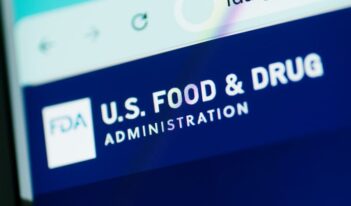
The FDA drafts guidance to help small restaurant and food retail chains comply with new menu labeling rules.
The Affordable Care Act (ACA) is best known for overhauling the American health insurance system, but some of its lesser-known provisions may cause problems for the restaurant industry. Specifically, the ACA’s menu labeling rules could impose costs on small restaurants and chains. In response to this concern, the U.S. Food and Drug Administration (FDA) issued the “Small Entity Compliance Guide” this month to help restaurant owners comply with the ACA’s new labeling requirements.
Members of Congress began voicing concerns about the FDA’s menu labeling rule when it first appeared in the Federal Register as a proposed rule in 2011, echoing responses the FDA received by public comment. Concerns focused on food services without ordinary menus, including ready-to-eat foods sold in supermarkets, restaurants that primarily deliver to customers, and drive-through restaurants with limited menu space.
Last December, the FDA issued a final rule implementing the ACA’s menu labeling provisions, which require that certain restaurants and retail food establishments disclose nutrition information to customers.
The FDA published the small entity guide because it determined that the new labeling rule will have a “significant economic impact on a substantial number of small entities” and small businesses. The compliance guide is targeted at these smaller chains, and seeks to provide a “plain language” restatement of the menu labeling standards, which may mitigate concerns in Congress and in the business community.
The most obvious application of the new labeling rule is to foods served at traditional sit-down and fast food restaurants. However, the rule also applies to businesses such as grocery stores and convenience stores that sometimes serve ready-to-eat foods off menus but do not generally operate in the same way as a restaurant. To alleviate confusion, the Small Entity Compliance Guide explains which establishments are subject to the rule, which foods are covered by the rule, and the types of information that must be included on menus and supplemental writings.
The line between foods that are covered and those that are not comes down to factors such as the manner and location in which the food is generally consumed, and the availability of the same food products outside of the establishment. For example, the rule requires nutrition information to be displayed for ready-to-eat foods purchased from a menu or menu board at a grocery or convenience store. These foods are usually eaten as a single meal very soon after purchase, and they are not resold by any other businesses. The rule also applies to foods purchased at take-out and delivery restaurants, food purchased at drive-throughs, movie theater concessions, self-service foods, and foods sold from a display.
On the other hand, ready-to-eat, non-self-serve foods, such as prepared foods sold by weight and baked goods, are generally exempt from the labeling requirements. According to the guide, the rationale behind this exemption is that such foods are usually stored for use at a later time or eaten over several sittings.
The new rules, which go into effect in December, require menus and menu boards to display calorie information along with a “statement to enable customers to understand, in the context of a total daily diet, the significance of the calorie information provided.”
Other nutrition information — including fat, carbohydrate, cholesterol, sodium, fiber, sugar, and protein content — must also be made available to customers in written form upon request. The guide explains the rule’s formatting guidelines, which specify the required location, size, and color of the nutrition information on menus.
The requirements apply to restaurants or similar retail food establishments which are part of a chain with 20 or more locations, including franchises, operating under the same name and offering substantially the same menu items. Restaurants with fewer than 20 locations are not required to comply with the labeling rule but may do so voluntarily.
Although some city and state laws have already forced many large chain restaurants to begin labeling their menus with calorie information, the ACA is the first federal law requiring menu labeling. Studies about the effects of menu labeling on consumer choices have yielded mixed results. Some studies found that a significant number of customers take nutrition information into account when ordering in a restaurant, while other research shows that consumers hardly notice calorie counts on menus. A 2012 study from the Centers for Disease Control and Prevention (CDC) found that only 57% of consumers who noticed calorie counts actually used them when making choices about what to order.
The Small Entity Compliance Guide is an FDA guidance, and public comments can be submitted at any time. The Guide can be accessed electronically, and hard copies are available upon written request.



